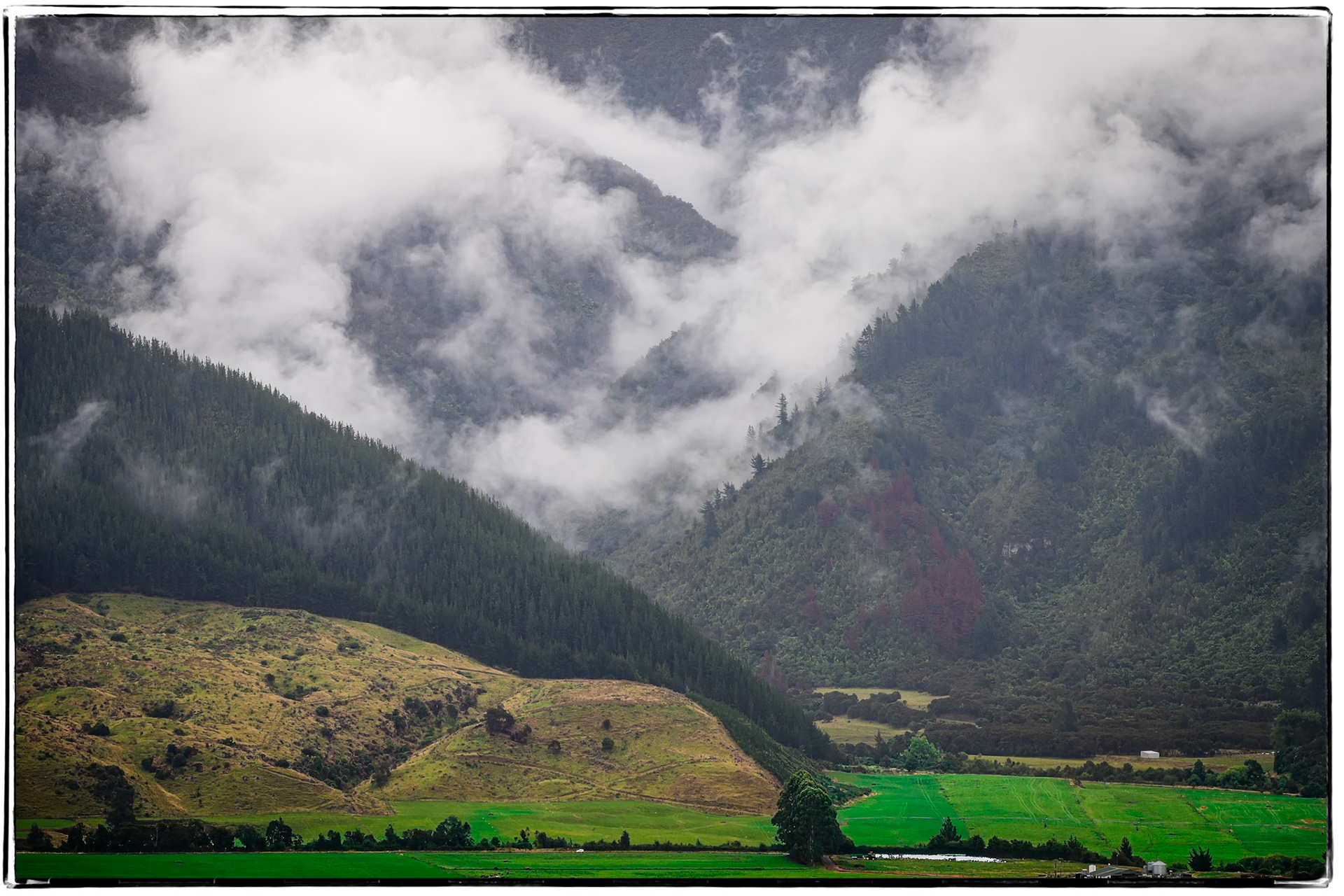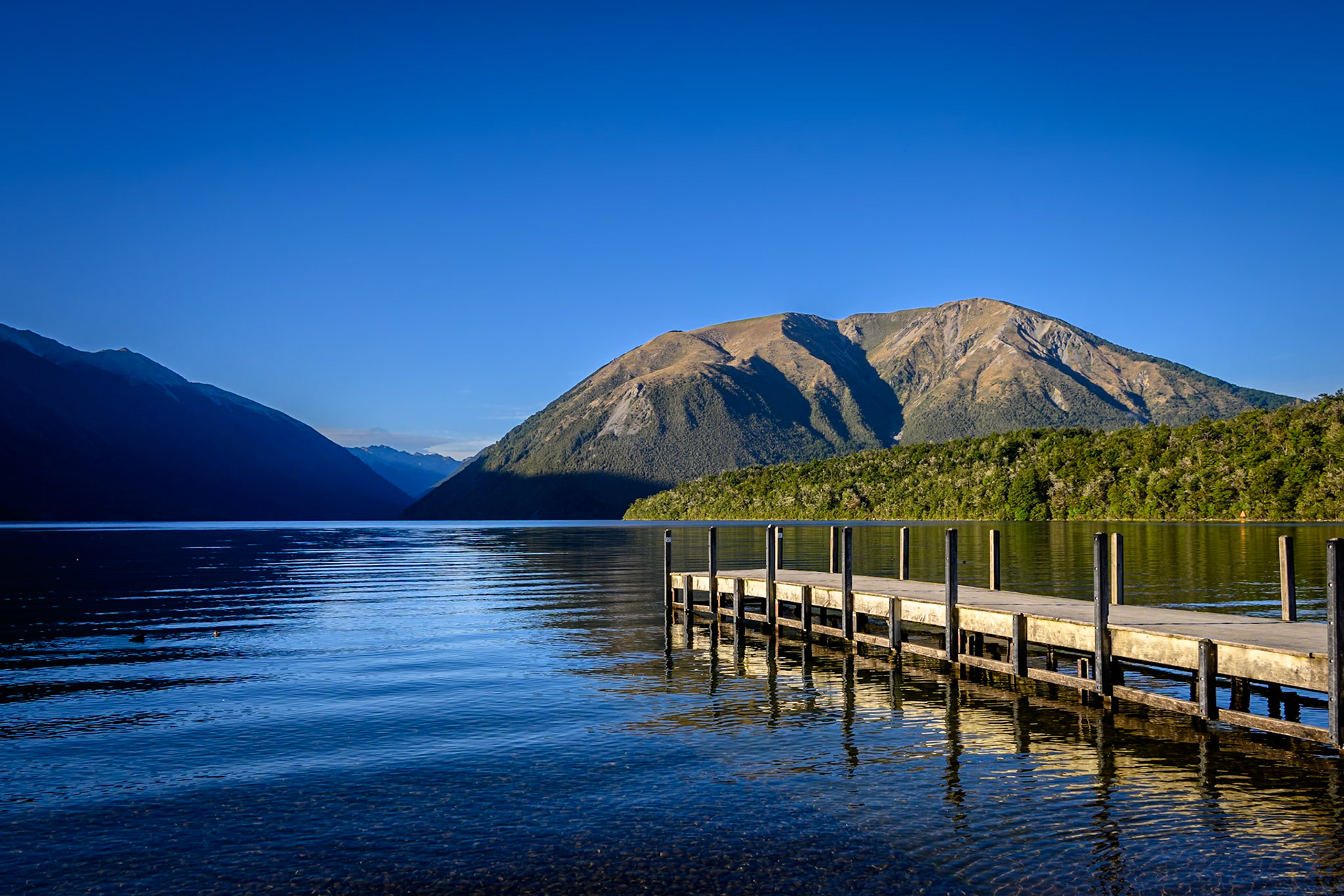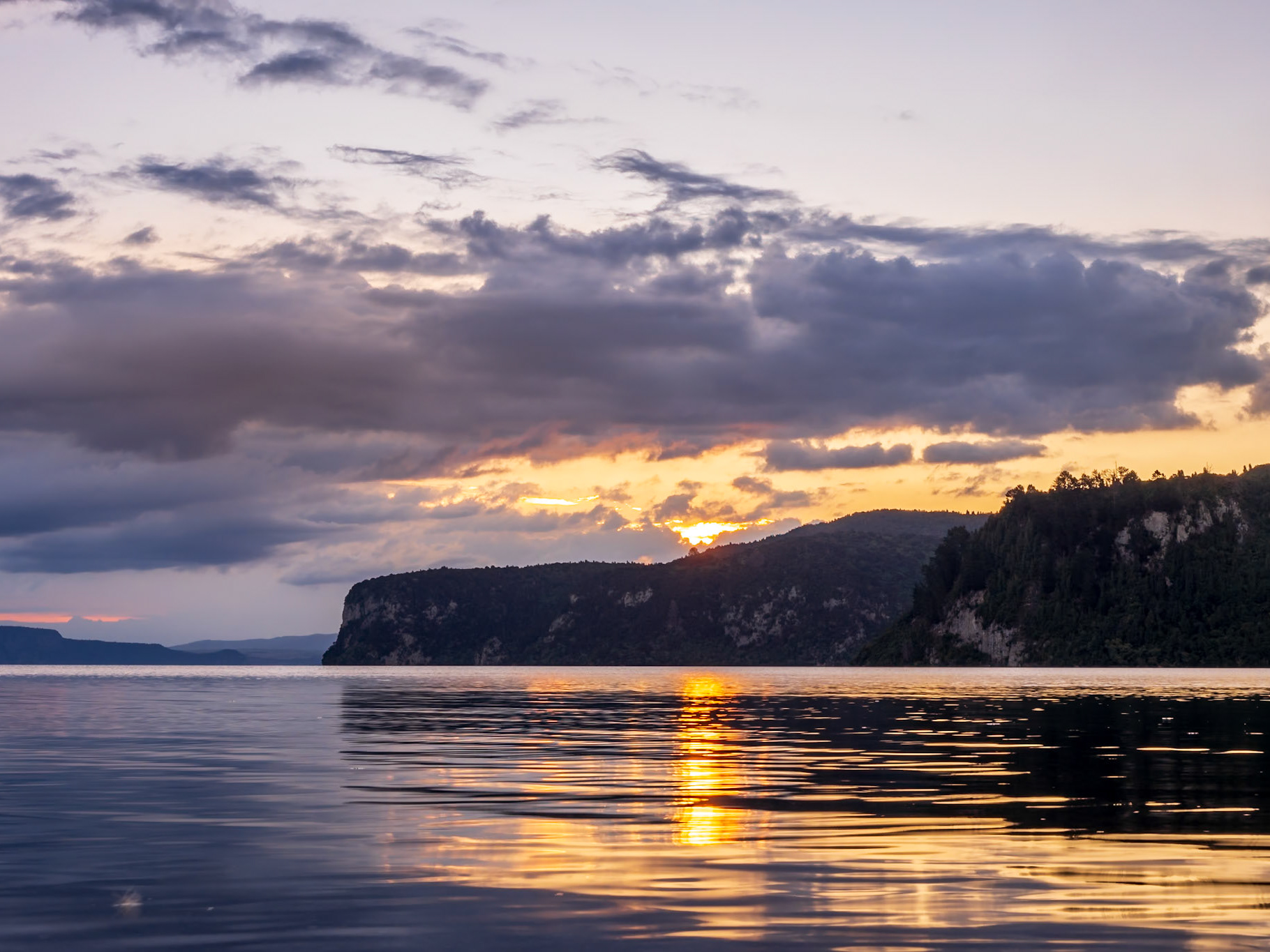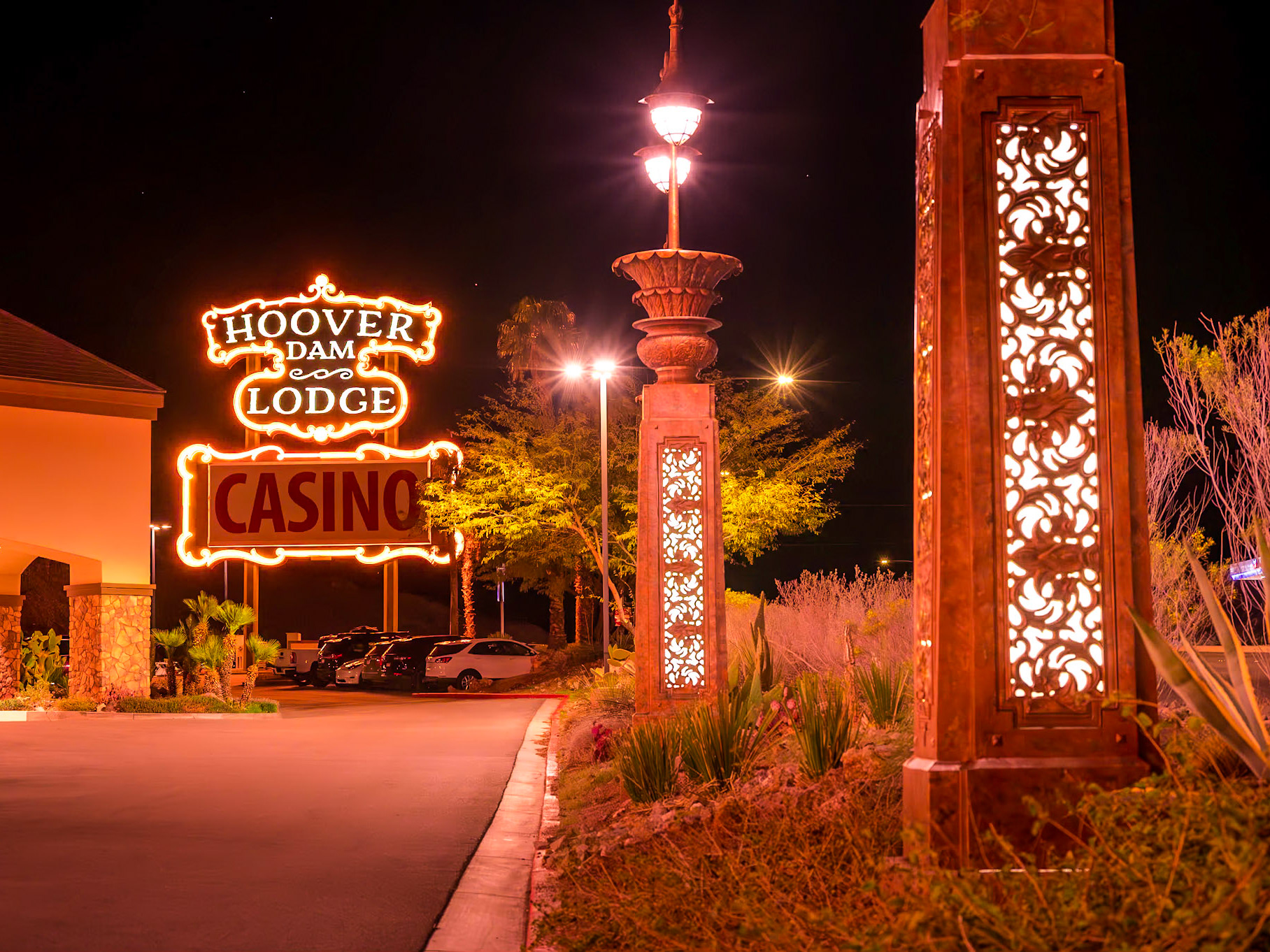Our third week in New Zealand did not get off to the best of starts, with a call in the middle of the night advising us of what turned out to be a burst pipe in Southwold bringing down the ceilings and causing a lot of damage in at least two of the bedrooms. Fortunately Dominic was able to stop any further damage by turning the water off, and being over 11,000 miles away, we had little choice other than to carry on and get ready to move on to the South Island.
As had been the case throughout our time in the Wellington area, it was very windy, with the winds across the Cook Strait exceeding fifty knots, and giving a three metre swell, making the trip across from the North Island to the South Island more than a little bumpy. The crossing goes from the east side of the North Island around the bottom and up the west side of the North Island, and then across the Cook Strait where the wind was having the biggest effect. I had to go and sit outside to avoid being sick, whilst Teresa could not stand up with fear of being sick and so stayed inside. Fortunately, our differing strategies worked and neither of us was sick. When we entered the sounds in the South Island, travelled along these which took at least an hour and a half of the three and a half hour journey, it was still windy but the sea was relatively flat and the scenery was absolutely stunning. As we passed each inlet, it seemed to look better than the previous one. Looks like we are in for a treat in the South Island.




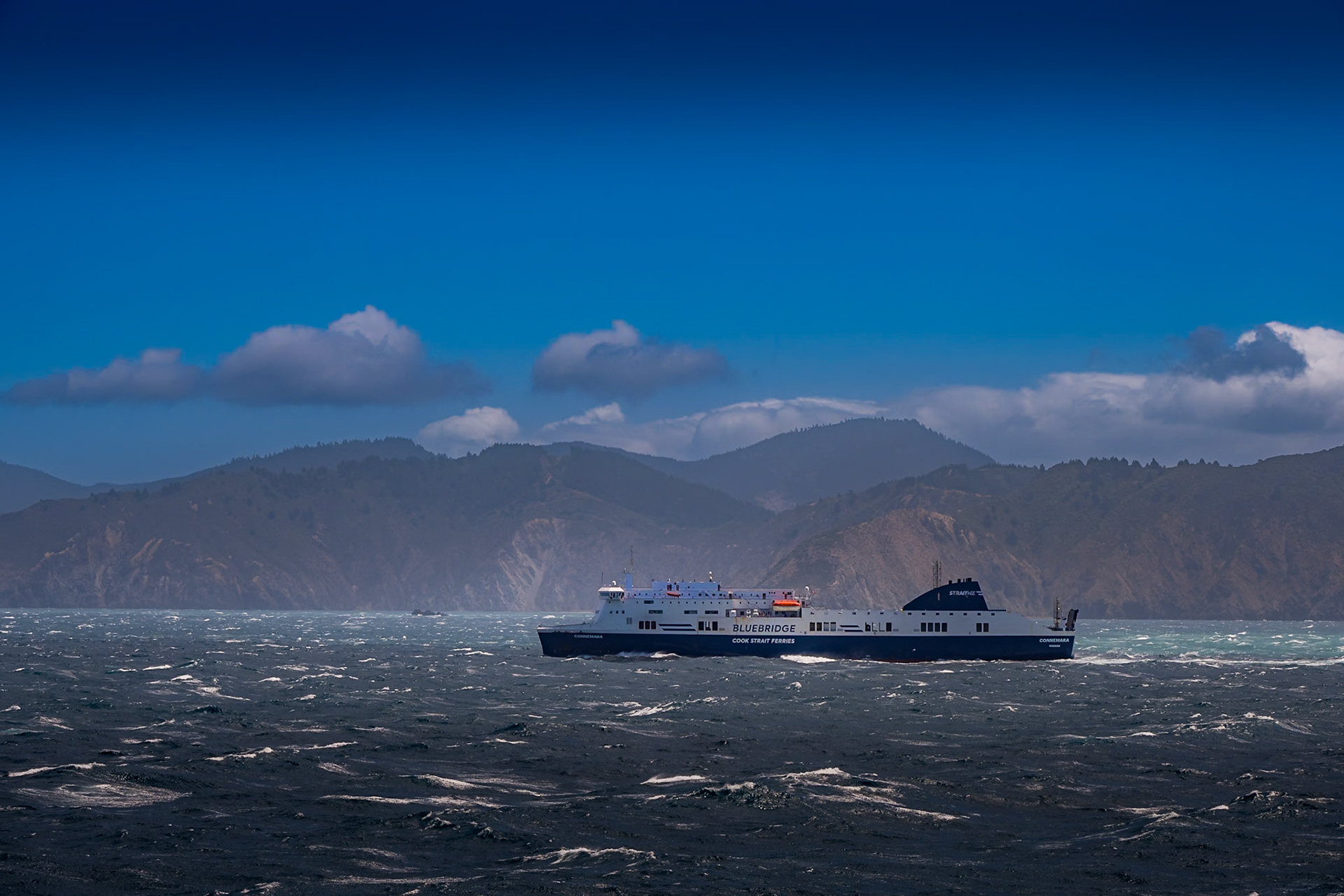
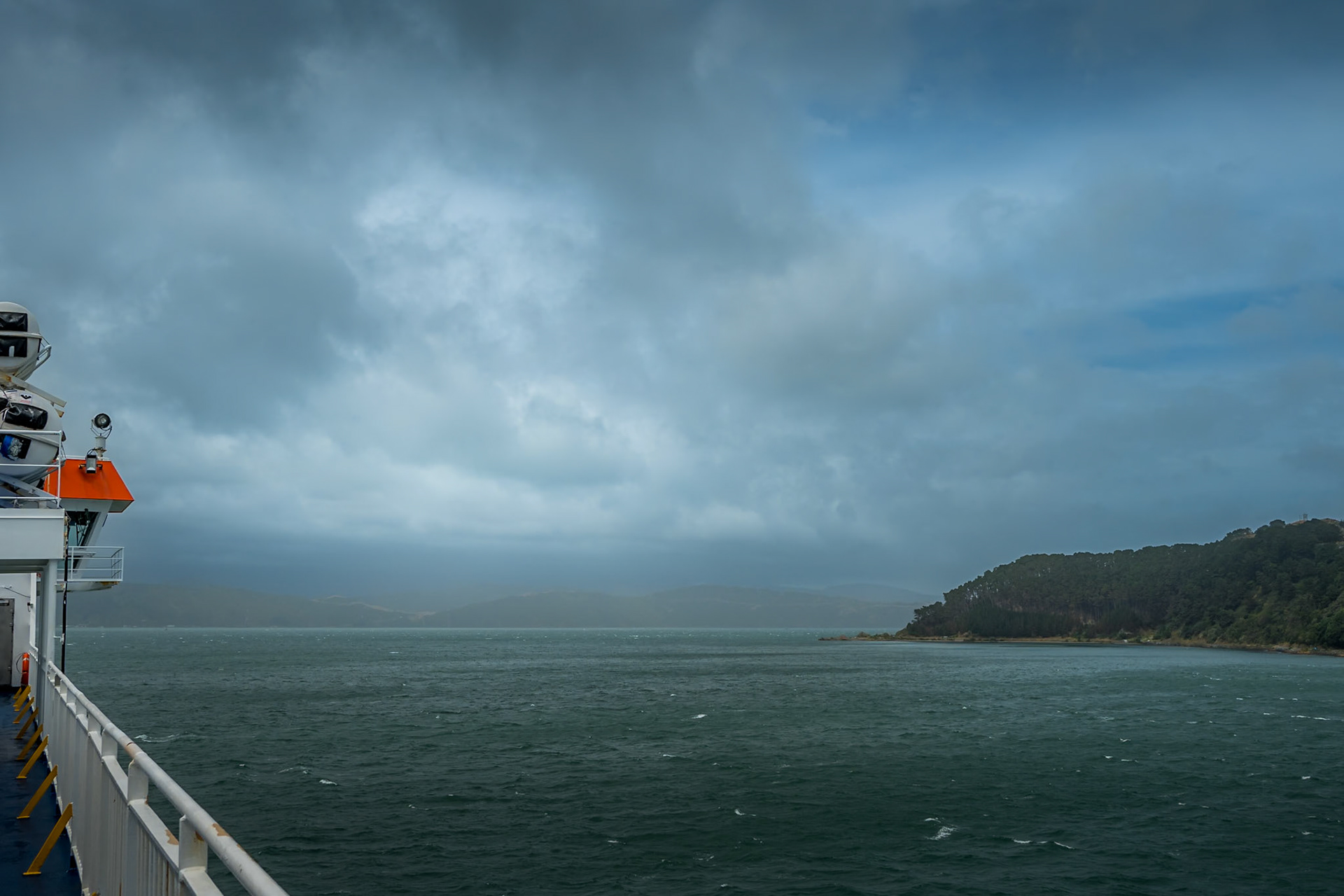
After getting off the ferry, we drove almost two hours from Picton to Nelson for our hotel for the next two nights.
Although we did not know beforehand, we had arrived in Nelson on a public holiday, for the Nelson Anniversary. It didn't seem that anybody really knew what the anniversary was the anniversary of, but a quick Google search suggested that it is the anniversary of the first Europeans landing in Nelson to establish a settlement in February 1842.
For our full day in Nelson, we decided to have a walk around town, but in the end started walking along beside the river, arriving at the Queens gardens, named for a Queen Victoria jubilee, and found a lovely café in an art gallery in the gardens for brunch. We continued walking along by the river and up a hill overlooking Nelson to a monument marking the centre of New Zealand. It has to be said that this is very unlikely to be considered the real centre of New Zealand. It seems that a decision was made that this should be considered the centre of New Zealand on the basis that this was the biggest hill overlooking Nelson, Nelson being the capital of the most central of the 12 regions of New Zealand. Nevertheless, there was a nice view over Nelson and the sea, and there were quite a few other people who had walked up the hill to have a picture taken at the centre of New Zealand. We then made our way back into the town, and visited the modern looking cathedral which was finished in the early 1970s.
Nelson is the home to Pic’s peanut butter, and every jar of Pic’s peanut butter (which apparently is available in UK) is made in the factory. We were lucky enough to be able to get on a tour of the factory with many peanut butter lovers - when the group was asked “who does not like peanut butter”, Teresa was the only one to raise her hand to the question. Nevertheless, it was a fun trip on our way up to Abel Tasman National Park.
Abel Tasman National Park is one that is largely only accessible by boat. We therefore stopped off at Kaiteriteri where we boarded our boat to take us to the bay in Anchorage, passing the well named Split Apple rock on the way, a rock which looks (almost) like an apple cut in two. We landed on the beach, and then had around 2 hours to do a walk along the coast, stopping at some small bays, before getting the boat back to the town. On the way back, we were lucky enough to see a seal sunning herself on the rocks.
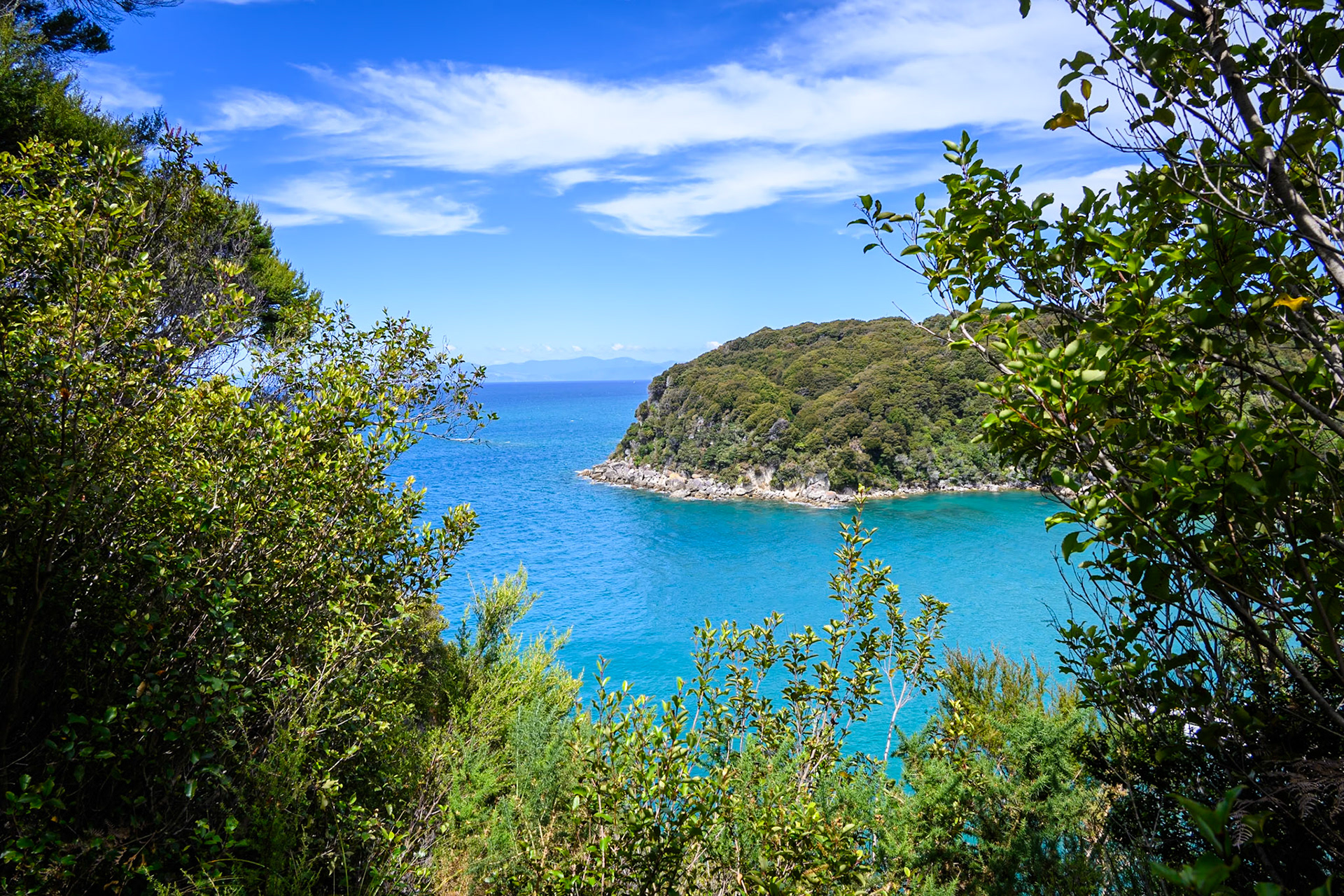

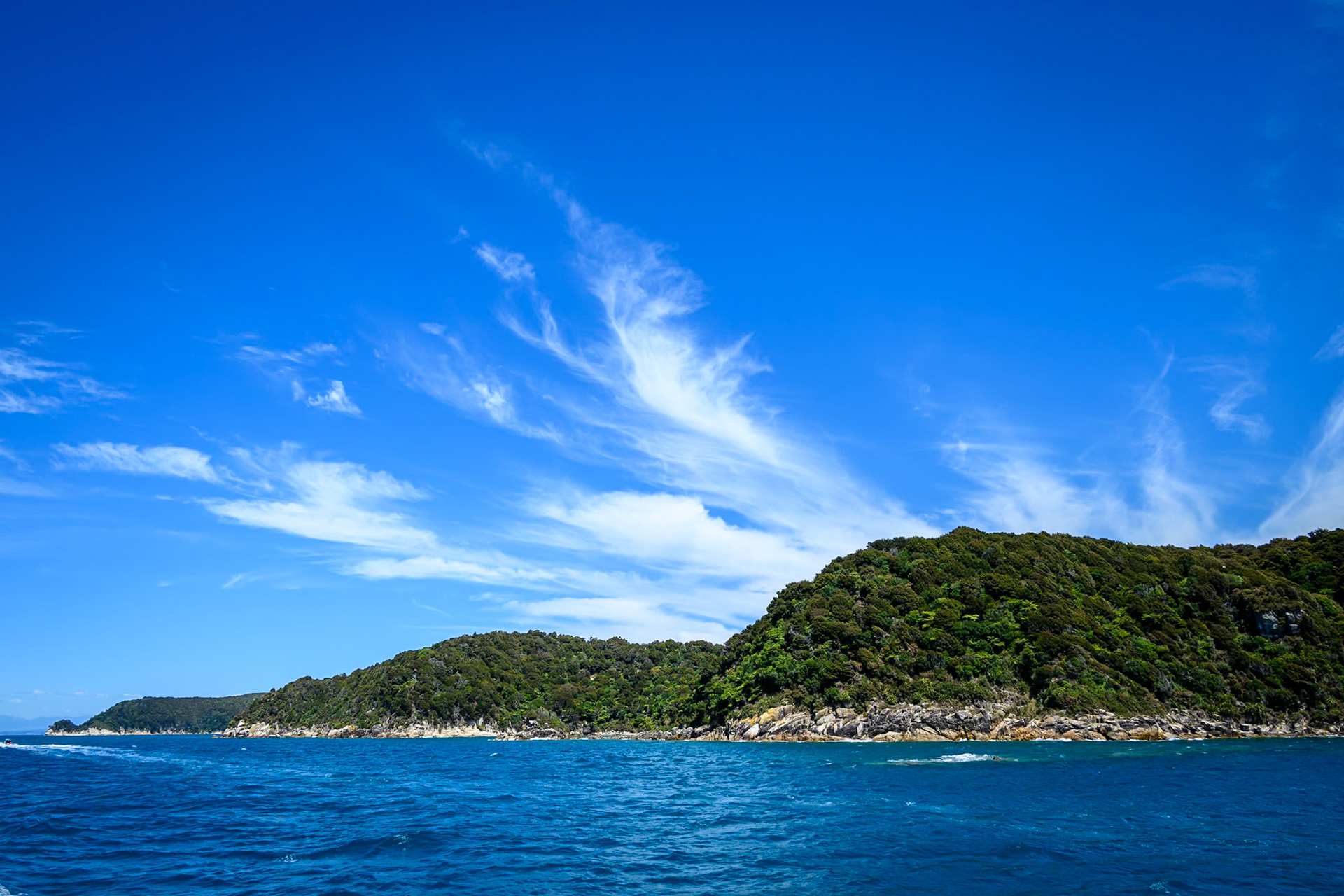


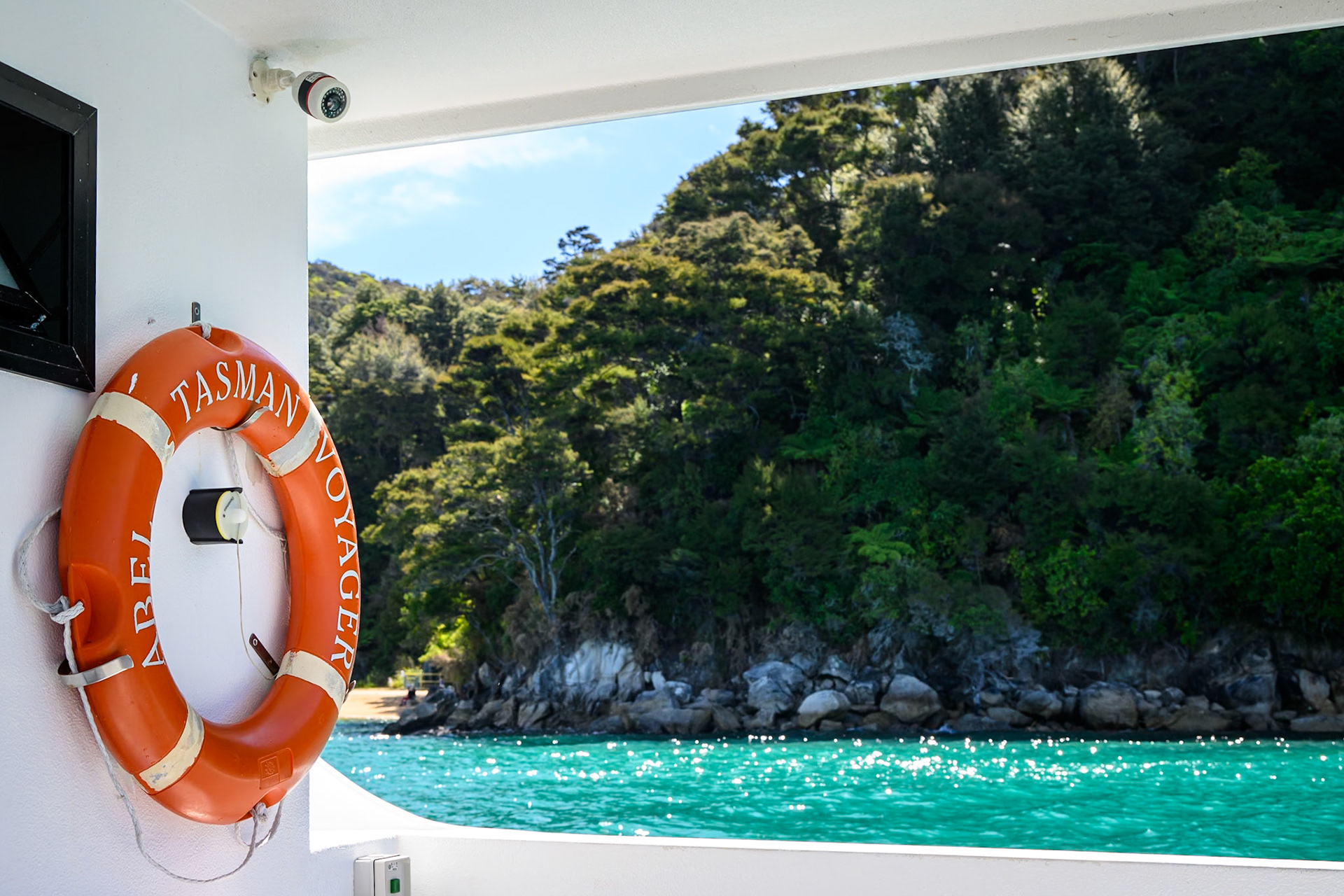






Our accommodation for the night, and indeed for the following two nights, was in Patons Rock, a beachside town looking north across the Tasman sea. The road from Kaiteriteri to Patons Rock was one of the more twisty roads that we had driven along on the trip, and so whilst one of our thoughts had been to go back to Kaiteriteri to do another boat hike, we thought better of it. Although a little bit tired, our accommodation had everything we could wish for, a large deck with views over the sea, plenty of room, and, yes, a washing machine.
Appreciating that the sun would come up over the bay, I got up early the following morning to see the sunrise. Being the only one down on the the beach, other than a few seagulls, and seeing the sky turn pink as the sun rose was a great way to start the day. The bay is very long, we went down onto the beach and walked for almost two miles and still had not reached the end. We stopped for a swim. The water was very clear, although slightly colder than expected. The nearest town, Takaka, was about 10 miles away, and so we made our way there to get some food, stopping at Waitapu Springs, where the freshwater springs bubble to create huge very clear pool with underwater plants vivid greens, rates blue colours. We then continued our drive, and found ourselves at the very edge of the north of the Abel Tasman National Park, where there was a walk into the National Park to see Wainui Falls. It had been a few days since we last saw waterfalls, so we took the opportunity for the three mile round trip, including a walk across a quite wobbly suspension bridge, to see the falls.
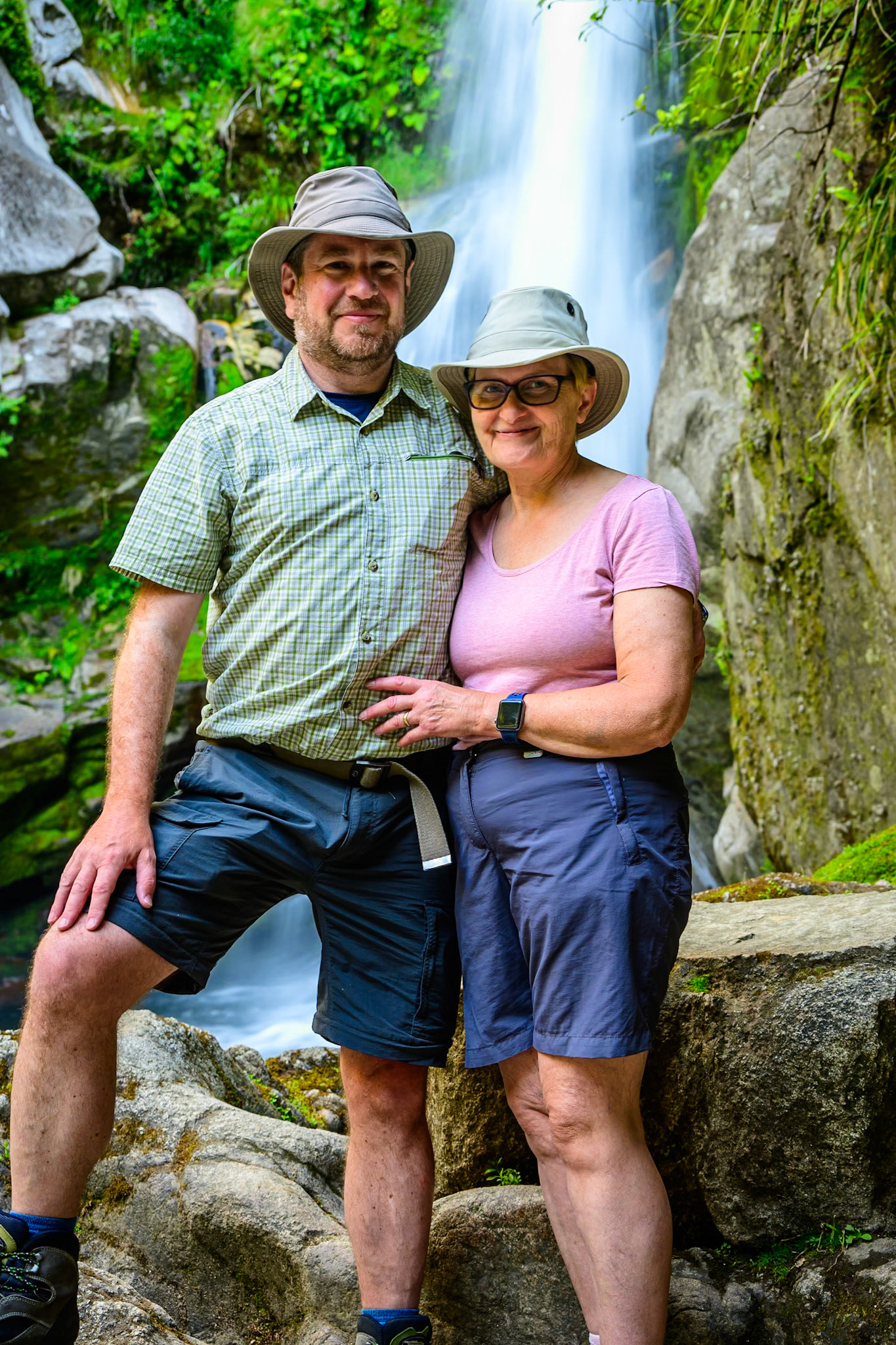





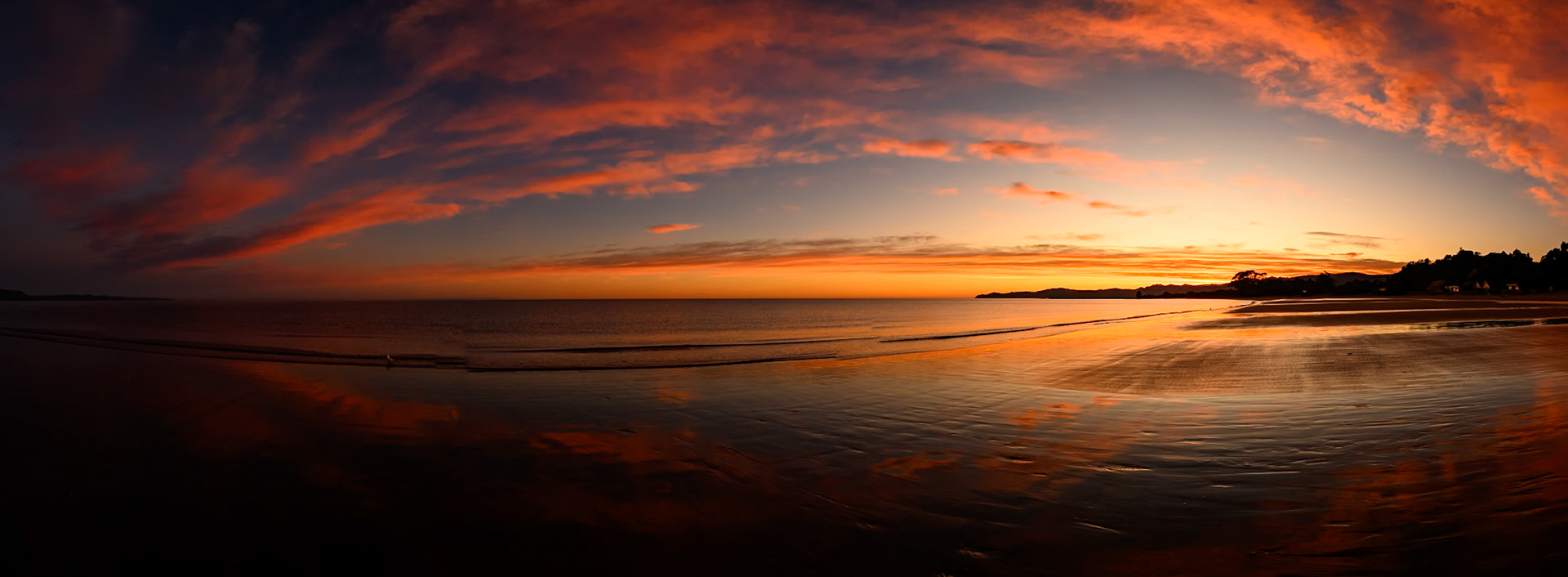
The next day in Patons Rock did not have lovely sunrise that I had seen it the day before – indeed we barely saw the sun all day. We were glad that we had got all the washing done that the day before. At one point, it appeared that the rain had stopped, or had at least reduced to a drizzle, and so we thought we would go for a walk. The walk was meant to be just under 3 miles, and described as easy. However, it was anything but. It was generally a good job that we had downloaded the walk, since there were an awful lot of alternative paths and without clear guidance, we would certainly have got lost. However, even the path that we were supposed to be following was difficult to follow, at times disappearing, and times ending high up a bank of a river. We therefore had to take quite a few detours, and quite a lot of scrabbling through undergrowth. That in itself would have been an adventure – but then it started torrential raining. Both our pairs of boots, whilst being generally very waterproof, ended up full of water, the rain having run down our legs and wicked through our socks into our boots. By the time we eventually made it back to the car, we were soaked through, despite our waterproofs. I therefore changed into the only dry clothes that I had in the car - my swimming trunks and flip flops. Teresa refused to change into her bikini to drive home. The rain did not relent for the rest of the day, and we therefore stayed in and finished watching The Hobbit, remembering our recent trip to Hobbiton as we did so.
It was then time to leave Abel Tasman, and drive on to Saint Arnaud on Lake Rotoiti. Saint Arnold was smaller than we were expecting, having a single shop/cafe/garage and one lodge that served “proper” food (apparently ice creams and crips from garage does not count as proper food). We therefore visited the lodge a couple of times, the first time for pizza, having just missed the lunchtime menu (actually getting the lunchtime menu, but by the time they came to take our order finding it was too late to order from that menu), and once the following evening for a lovely meal of snapper followed by ice cream (for Theresa) and a magnificent cheese board for me. In between, we took a water taxi from the Saint Arnaud end of the lake to the lakehead, and walked back about 7 miles beside the lake. The lake is formed in the valley created by a glacier, and on either sides the mountains are carved with truncated valleys running down to the lake. This meant the path was quite up and down, and with the recent rain quite wet and muddy. We did have to cross at least three streams, and at times it felt as though we were walking along others. By the time we got back to the jetty from which we had caught the water taxi in the morning, we felt like we had done a much longer and harder walk then a seven mile walk beside a lake.
Saint Arnaud had not been a place on our original itinerary, but we were happy that we had stopped there, especially being in accommodation only a few 100 metres from at the edge of the lake.
